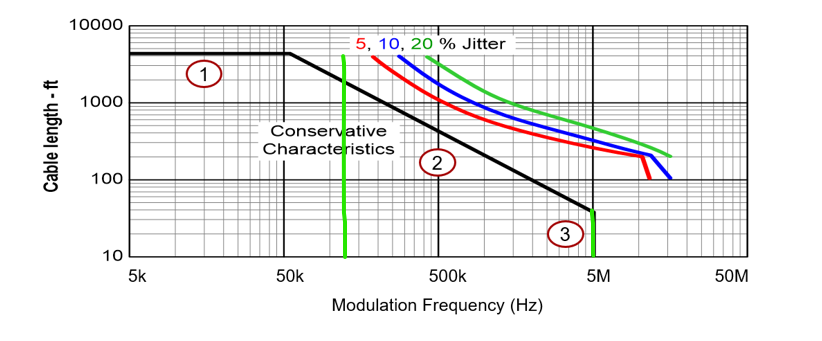Hi Team,
What is the maximum transmission distance for this product?
If it depends on the speed or other factors, please tell me the regulation.
Best Regards,
This thread has been locked.
If you have a related question, please click the "Ask a related question" button in the top right corner. The newly created question will be automatically linked to this question.
Hi Team,
What is the maximum transmission distance for this product?
If it depends on the speed or other factors, please tell me the regulation.
Best Regards,
Hi Takahashi-san,
The max transmission distance is highly dependent on multiple system factors.
The Factors that impact max distance for the THVD8000 are:
1) Modulation frequency
2) Cable / Trace Physical Properties (propagation velocity, characteristic impedance, and DCR are most important here)
3) Network topology - depending on how many nodes there are in the system the network topology can impact signal quality so special care will need to be taken to address these issues for systems with > 2 nodes.
4) Transceiver node design - the specific design of the node (especially with respect to termination and series capacitors) will impact max distance as well.
An approximate distance vs. modulation frequency graph is shown below:

A few notes about this graph:
1. It assumes a 22AWG 120 Ohm cable in a properly setup system
2. The THVD8000 modulation frequency range starts at 125KHz and ends at 5MHz - these points are represented by the light green vertical lines.
At 125KHz in a properly setup system you can approximate about ~550m and at a modulation frequency 5MHz about ~12m. However this assumes relatively ideal setups. The max suggested data-rate is modulation frequency / 10.
This is only for the standard approach - there are more complicated systems that integrate a THVD8000 + additional circuitry (like a line driver) to increase drive strength which can result in larger distances for the same loading conditions.
It must be noted that max distance is still highly variable and the graph I gave you is really only an approximation under pretty ideal conditions - actual systems can vary so there would need to be testing on system design to ensure that the system will work under all operating conditions.
There is no specific regulation that these devices conform to - they are essentially modulated RS-485 and maintain most of the RS-485 standard requirements - with the main exception that the receiver thresholds are different than standard RS-485 due to the demodulator (THVD8000 receiver only looks at magnitude not polarity of signal where classical RS-485 receivers look at both magnitude and polarity).
Please let me know if you have any other questions.
Best,
Parker Dodson